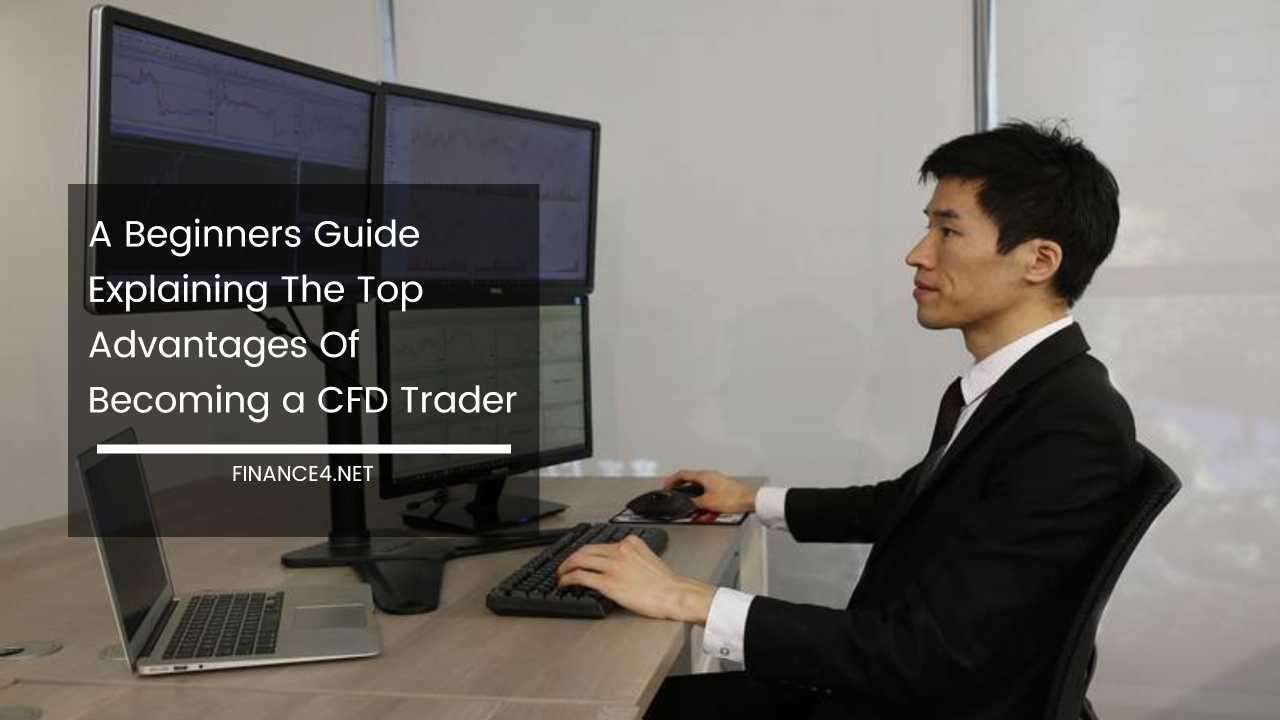CFD Trading in 2024: A Beginner’s Guide to Advantages & Risks

A Beginner’s Guide to the Top Advantages of CFD Trading in 2024
The financial markets can be a daunting landscape, filled with complex instruments and seemingly endless jargon. But for those seeking an exciting way to participate, Contract for Differences (CFDs) offer a compelling entry point.
This guide dives into the key advantages of becoming a CFD trader in 2024, helping you decide if this path aligns with your financial aspirations.
Demystifying CFDs: Speculating on Price Movements in a Modern Market
At the heart of CFD trading lies the ability to speculate on the price movements of various financial instruments. Unlike traditional ownership of stocks, commodities, or currencies, CFDs involve a contract with a broker.
You essentially agree to exchange the difference in price between when you open and close the position. This means you can profit if the price goes up (going long) or down (going short). Imagine you believe the price of Apple stock will increase.
By taking a long CFD position, you stand to gain if the price prediction holds true. Conversely, a short position allows you to potentially profit if the price goes down.
Unparalleled Flexibility: Your Trading Universe at Your Fingertips
One of the most attractive advantages of CFDs is their inherent flexibility. Gone are the days of needing separate accounts for different asset classes. Modern CFD platforms offer a vast array of tradable instruments, all accessible from a single platform.
Stocks, commodities, currencies, indices, and even Exchange-Traded Funds (ETFs) can be readily accessed, allowing you to construct a diverse and adaptable trading portfolio.
This empowers you to react to market trends and capitalize on opportunities across various sectors, all within a user-friendly interface.
Democratizing Trading: From Limited Access to a Globalized Marketplace
Remember the times when retail investors relied solely on brokers to manage their trades? CFDs ushered in a new era of democratization.
Today, you no longer require a dedicated broker to participate in the market. By simply opening and funding a CFD trading account, you gain direct access to a globalized marketplace.
This not only allows you to trade in your local markets but also opens doors to international opportunities. Imagine trading stocks of tech giants like Microsoft and Google, or even delving into the exciting world of foreign exchange markets – all from the comfort of your home.
Hedging Your Bets: A Powerful Tool for Risk Management
The financial world thrives on a delicate balance between potential gains and inherent risks. CFDs provide a valuable tool called hedging to help you navigate this dynamic landscape.
Hedging involves taking opposing positions in the market to offset potential losses. For instance, if you own shares in a company and anticipate a price decline, you can take a short CFD position on the same stock.
This way, if the price indeed falls, your losses from the actual shares might be mitigated by the gains from the short CFD position.
Hedging is a common practice, particularly in volatile markets like currencies and commodities, allowing you to manage risk and take a more calculated approach to your investments.
Beyond the Short Term: Embracing Long-Term Strategies for Success
While some traders might be tempted to chase short-term market fluctuations, successful CFD trading often hinges on a long-term perspective.
Short-term information can be fleeting and unreliable. By analyzing longer time frames, you can gain a deeper understanding of market trends and identify underlying patterns.
This allows you to make informed decisions that align with your long-term financial goals, be it building wealth for retirement or accumulating capital for future investments.
A Word of Caution: Understanding the Risks Before You Begin
While CFDs offer exciting opportunities, it’s crucial to acknowledge the inherent risks involved.
- Leverage: A double-edged sword, leverage allows you to control a larger position with a smaller initial investment. This can magnify both profits and losses. It’s essential to understand leverage and use it cautiously, as significant losses can occur if the market moves against your predictions.
- Volatility: Markets are inherently volatile, and CFDs expose you to this volatility. Prices can fluctuate rapidly, leading to potential losses if you’re not prepared for such movements.
- Margin Requirements: When trading on margin with CFDs, you only need to deposit a portion of the total trade value. However, if the market moves against you and your account value falls below a certain threshold (margin call), you might be required to add more funds or have your position closed automatically, potentially leading to losses.
The Road Ahead: Essential Considerations for Aspiring CFD Traders in 2024
As you embark on your CFD trading journey in 2024, here are some key considerations to keep in mind:
- Regulation: Regulatory environments for CFD trading can vary depending on your location. Ensure you understand the regulations in your jurisdiction before opening an account. Look for reputable brokers who are licensed and regulated by a recognized financial authority.
- Education: In the ever-evolving world of finance, education is paramount. Numerous resources are available online and through reputable brokers to help you understand CFDs, market analysis techniques, and risk management strategies. Consider taking online courses, attending webinars, or reading books and articles from trusted financial sources.
- Practice with a Demo Account: Before risking real capital, most CFD brokers offer demo accounts with virtual funds. This allows you to practice trading strategies, get comfortable with the platform, and understand the mechanics of CFDs in a risk-free environment. Utilize this valuable tool to hone your skills before venturing into live trading.
- Start Small and Scale Gradually: As a beginner, it’s wise to start small and gradually increase your trade size as you gain experience and confidence. This allows you to manage risk effectively and minimize potential losses while learning the ropes. Remember, consistent profitability takes time and dedication.
- Develop a Trading Plan: A well-defined trading plan acts as your roadmap to success. It should outline your trading goals, risk tolerance, entry and exit strategies, and money management rules. Stick to your plan and avoid impulsive decisions based on emotions.
- Stay Informed: The financial markets are constantly evolving, influenced by global events, economic data releases, and industry trends. Make a habit of staying informed by following financial news, reputable analysts, and economic calendars. This allows you to identify potential trading opportunities and make well-informed decisions.
Final Thoughts: Unveiling the Potential of CFD Trading in 2024
The emergence of CFDs and online trading platforms has transformed the financial landscape. With increased accessibility, transparency, and flexibility, CFDs offer a compelling way to participate in the market.
However, it’s crucial to remember that CFDs are complex instruments and carry inherent risks. By thoroughly understanding the advantages and potential drawbacks, combined with a commitment to education, risk management, and a strategic approach, you can position yourself for potential success in the exciting world of CFD trading.
Remember: CFD trading is not suitable for everyone. It requires a strong understanding of financial markets, risk management skills, and a disciplined approach. Always prioritize your financial well-being and never invest more than you can afford to lose.



